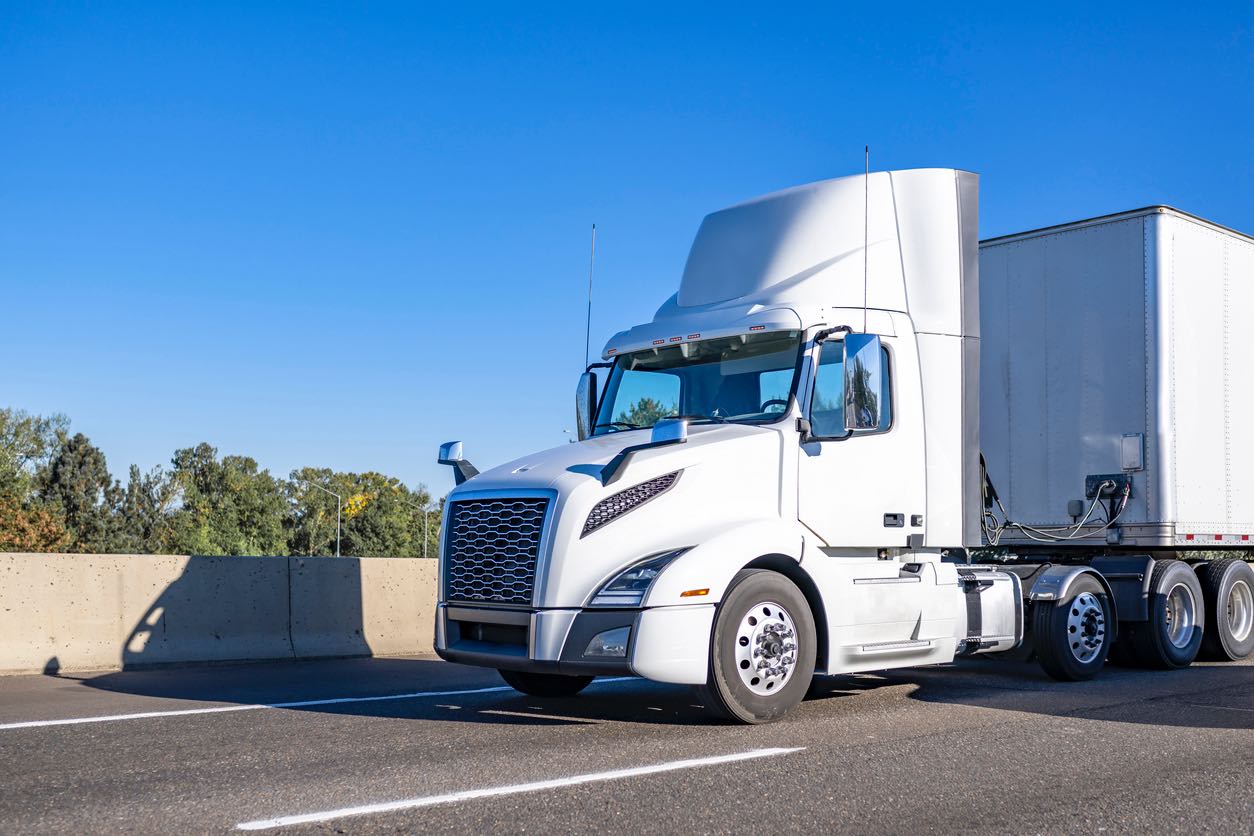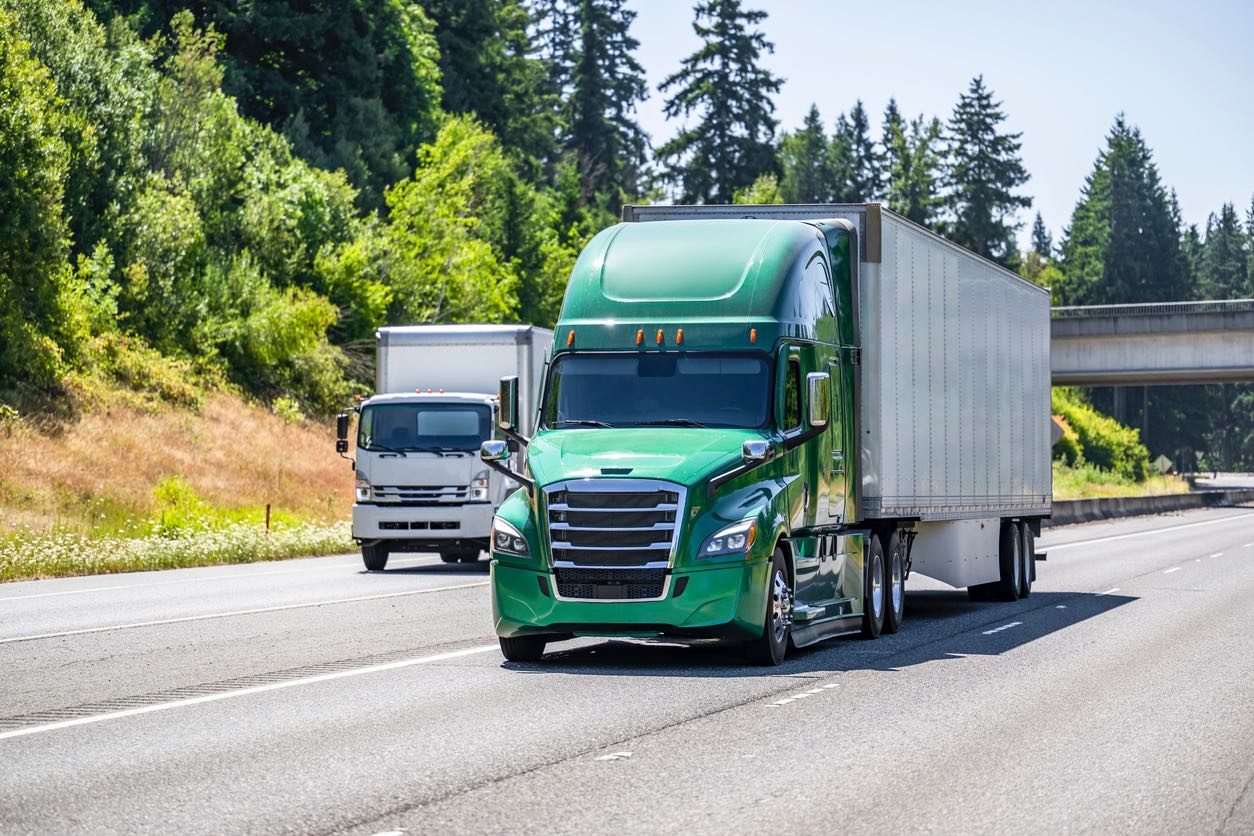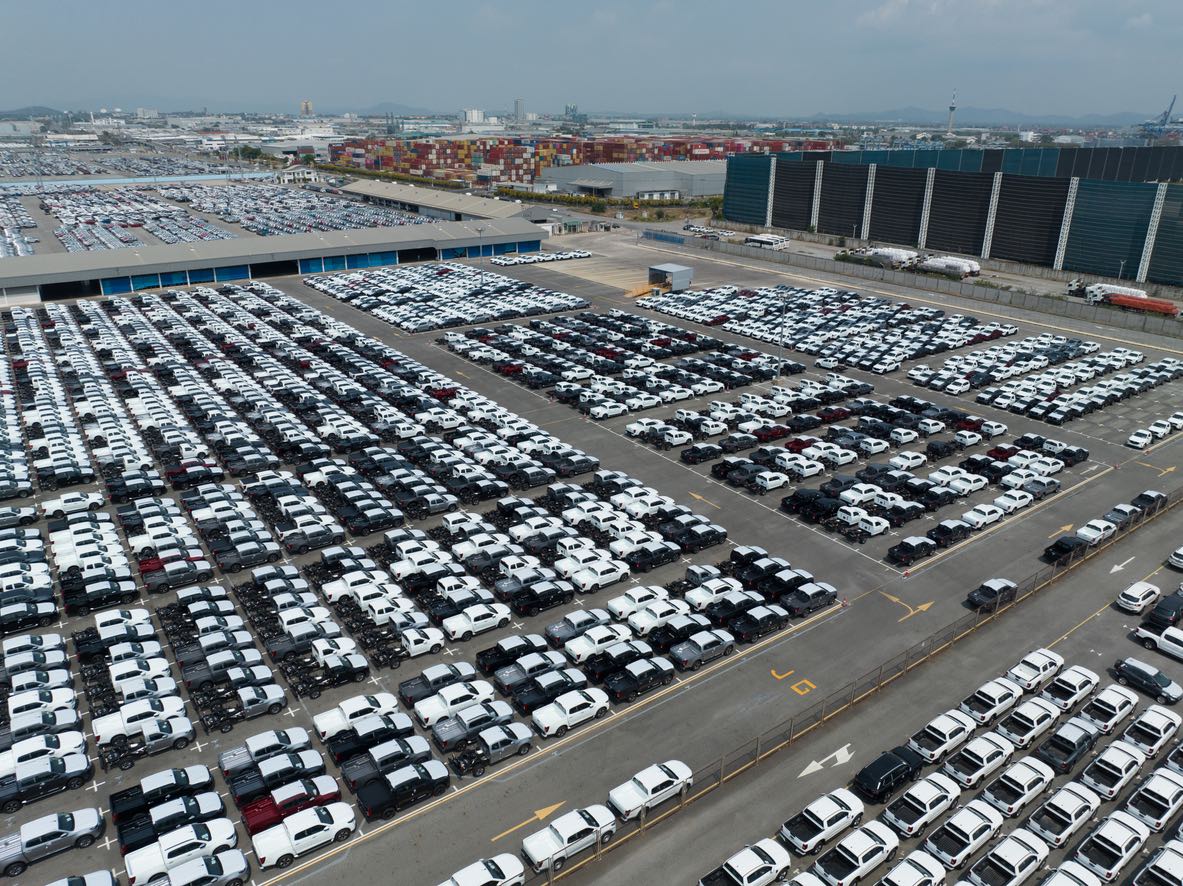There are several distinct obstacles and factors to take into account while transporting a car from one state to another in the US, all of which have a significant impact on the final outcome. Planning beforehand and paying close attention to details are essential when moving for a new job, shipping a car to a relative, or buying a car out of state. With its step-by-step methodology, this publication seeks to simplify the procedure and guarantee a seamless, secure, and economical auto transport experience. Focusing on important details like selecting the best mode of transportation, getting your car ready for the move, and being aware of the financial ramifications can help you travel this route with assurance.
Setting off on interstate car transportation can seem complicated at first glance. But given the correct knowledge and tools, it becomes a manageable process. We explore the subtleties of several modes of transportation, clarify the documentation and laws associated with them, and offer helpful advice on how to get your car ready for the trip. Our objective is to provide you with the information you need to make wise choices, protecting your car’s safety and your peace of mind all along the way. This blog post is a thorough resource designed to accommodate the various demands of automobile owners nationwide, regardless of your level of experience.

Knowing your alternatives is essential for making an educated choice when it comes to transporting a car from one state to another. The technique you select can have a big influence on the process’s overall security and simplicity as well as its cost and timing. The most popular options are to use a moving company, drive the automobile yourself, hire an auto transport company or use the train route. Every one of these alternatives has unique benefits and possible downsides, so the best decision for you will rely on a number of variables, including your spending limit, time frame, preferences, and the particular needs of your car.
Auto Transport Companies
When searching for a hassle-free experience, auto transport companies often represent the preferred option. These businesses offer a variety of services customized to meet your needs and are experts in transporting automobiles across states. The biggest benefit is how convenient they are; you won’t have to schedule a lengthy road trip or take time off from work. These businesses usually offer door-to-door service, which entails picking up your car from where it is right now and bringing it right to where you want it to go. Long-distance automobile sellers or people moving are the main beneficiaries of this choice. It’s crucial to take into account a number of things when choosing an auto transport company, including their insurance coverage, track record, and the scope of services they provide, such as enclosed or open carriers.
Self-Drive
It could be better for the more adventurous and frugal among you to drive the vehicle yourself to the new location. By using this method, you may avoid paying service costs and yet have total control over your car when traveling. This is a great chance to make the necessary road trip into something spectacular, especially if you love to drive and discover new places. But don’t forget to account for the expense of meals, lodging, gas, and any wear and tear on your car. Plus, this alternative requires a lot of energy and time, especially when traveling great distances. It’s critical to determine if the amount of time and effort saved by self-driving transportation outweigh the benefits.
Moving Companies and Trains
Moving companies provide a comprehensive moving solution, sometimes incorporating car transportation in their package. In case you are already utilizing their services for moving household items, this option could be quite handy. Including car transport in your entire moving strategy and working with a single supplier will streamline the process and perhaps save costs. But be sure the moving business has a solid history of transporting cars or you’ll end up paying more for the transport with your moving company than if you would go directly to the auto shipping company.
Alternatively, transporting your car via train is a less commonly known but viable option in some regions. This approach is particularly helpful for long-distance travel on the East Coast since it balances cost and convenience. Compared to driving, rail travel might be speedier and less expensive than certain vehicle transport services. But routes and availability can be restricted, and extra transportation would be needed to and from the train terminals.
To sum up, there are a variety of advantages and disadvantages associated with transporting an automobile from one state to another. Your decision should be based on your own needs, your financial situation, and the particular requirements of your travels. Consider all the advantages and disadvantages of each approach carefully to guarantee a successful and easy automobile shipping experience.

Making ensuring that your car is ready for interstate transport is essential to a hassle-free journey. Maintaining the appearance of your automobile is important, but so is ensuring its integrity and performance throughout the trip. This comprehensive article explores the necessary arrangements, assisting you in handling each stage with confidence and ease.
A Thorough Cleaning is More than Just for Aesthetics
Start by thoroughly cleaning the inside and outside of your vehicle. There’s more to this than just looks. A spotless automobile makes it easier and more accurate to check, guaranteeing that any dents, scratches, or other problems are evident and well recorded. Additionally, keeping the interior spotless is necessary to prevent incurring extra fees from the shipping company for clearing out personal belongings or garbage.
The Importance of a Clean Engine
Focus particularly on the engine compartment. In addition to preventing overheating problems during transportation, a clean engine makes it simpler to identify any leaks or technical problems that can cause problems.
Documenting the Car’s Condition Serves as Your Visual Record
Having documentation is essential to safeguarding your rights. Capture detailed images or videos of the vehicle from several perspectives, emphasizing the undercarriage, interior, roof, and any previous damage. In the event of any disagreements about the state of your vehicle upon arrival, this visual documentation will be quite helpful.
Time-Stamped Evidence
Make sure the time stamp is on your images or videos. This gives your documents more legitimacy by giving a detailed picture of the car’s state right before shipment.
A Mechanical Check-up is Ensuring Roadworthiness
Making ensuring that the car is mechanically sound is crucial. Verify the levels of all fluids, including the brake, coolant, oil, and windshield washer fluid. Make sure the battery is placed firmly and completely charged. Make sure there are no noticeable leaks and that the tires are filled correctly. These inspections will guarantee your vehicle is transported safely and have it ready for usage right away when you get to your location.
The Essentials of a Pre-Transport Inspection
Think about hiring a qualified technician to do a pre-transport examination. They can determine whether there are any possible problems that need be fixed before shipping, so your automobile is in the best possible shape for the trip.
A Checklist for Safety when Securing Your Vehicle
Take out of the car all personal belongings and customized extras. These things might move around while being transported, perhaps damaging the inside or going missing. Additionally, the transporter’s insurance usually does not cover personal things.
Detachable Parts and Alarm Systems
To avoid damage, fasten or remove any removable elements from your automobile, such as spoilers or antennae. If your automobile has an alarm system, make sure it’s turned off or provide the transport firm information on how to disable it in case it goes off while in transportation.
Locking Up
Lock your car when everything has been verified and fastened. Locking your automobile during transit can prevent theft and unwanted entry, despite the fact that this may seem contradictory.
You may be confident that your automobile is ready for its interstate trip if you follow these thorough instructions. This preparation gives you peace of mind as the vehicle travels to its new location while also protecting it and facilitating a seamless and effective transportation process. When you keep the auto in excellent shape, you’re laying the groundwork for a positive shipping experience and guaranteeing that it arrives prepared for the roads ahead.

It’s important to consider the costs involved when deciding whether to ship a car over state lines. The entire distance the vehicle will go, the mode of transportation you choose, whether you want an enclosed or open carrier, and other considerations can all have a big impact on these prices. For example, the first 500 miles of automobile transportation via an open carrier usually cost roughly $1 per mile. Longer trips can benefit from certain economies of scale as this rate frequently drops.
Diving Deeper into Pricing Models
Vehicle size and distance traveled are factors that auto transport companies often take into account when setting their rates. For instance, because of the extra room they require, bigger vehicles like trucks or SUVs may be more expensive to transport than sedans. It’s also important to remember that the total cost may vary depending on certain specialized services. For example, urgent shipping is great if you need your car moved right away, but it usually costs more. Similar to this, opting for covered transportation for your vehicle increases the expense but provides more protection from the weather and road risks. When choosing a service, compare these aspects to your financial situation and unique requirements.
Strategies to Save on Auto Transport
Obtain quotations from a few auto shipping companies to make sure you receive the best rate possible. This puts you in a stronger negotiating position and provides you with an idea of the current market price. Being accommodating with your shipment dates is another money-saving suggestion. Season and demand can affect prices, so if you have the luxury of leisure, selecting off-peak times might result in substantial discounts. Think about terminal-to-terminal shipping as well. Terminal-to-terminal transport can be less expensive than door-to-door service, which provides the convenience of having your car picked up and delivered to particular places. This option, which might be more affordable, entails dropping off and picking up your automobile at specified locations.
But keep in mind that, even if it’s important, money shouldn’t be the top priority. Finding the right balance between cost and dependability, safety, and reliability is essential to a positive and stress-free auto shipping experience. You may choose wisely and meet your financial and logistical needs by carefully examining and comprehending the pricing models and by carefully planning your transportation.

It’s critical to precisely manage the complex web of legal and regulatory procedures when transporting an auto from one state to another. Moving your car is only one aspect of this procedure; another is making sure that every action conforms with local, state, and federal regulations. Having all the required paperwork, including your car’s registration and insurance certificate, and confirming that the transport company you have selected complies with the law are essential for this.
Understanding State and Federal Regulations
Transporting a vehicle across the country isn’t merely a logistical challenge; it’s a legal one too. There may be differences in state laws governing the transportation of vehicles. Learn them so that you can stay clear of any unforeseen legal obstacles. Furthermore, requirements for car transporters are established by federal rules overseen by organizations such as the Federal Motor Carrier Safety Administration (FMCSA) and the Department of Transportation (DOT). For a safe and legal shipping experience, be sure that the company you have selected abides by these rules.
Required Documentation
Obtaining the necessary paperwork should be part of your preparation before you embark on your car shipping journey. This includes a current photo ID, proof of insurance, and the registration of your car (although these documents are only required when transporting a vehicle into or out of the United States). These documents guarantee that your car is lawfully allowed to be driven on the road in addition to proving your ownership. It’s a good idea to find out from your transport provider if there are any other documents they might need, including a contract for the vehicle shipping and a Bill of Lading, which is also a contract for the transportation of your car and a receipt for it.
Choosing a Reliable Transport Company
Choosing a trustworthy and compliant transport company is essential to a stress-free automobile shipping experience. Here, research is vital. Seek out businesses that are properly licensed and insured, in addition to having a solid reputation. Examine their FMCSA and DOT records for any prior infractions or warning signs. Transparent businesses will be happy to provide you their DOT number so you may check their legal status. Additionally, to evaluate a company’s dependability and level of service, read reviews and testimonials from prior clients.
Insurance Verification
An often disregarded but critical component of legal preparedness is insurance verification. Even if your personal vehicle insurance covers some things during transportation, it might not cover everything. Make that the insurance coverage provided by the transporter is sufficient to protect your car from any losses or damages that may occur while it is being transported. This entails being aware of the policy’s limitations and figuring out whether you need to get additional insurance protection for additional security.
To sum up, careful planning and wise decision-making are key to managing the legal and regulatory requirements while transporting an automobile from one state to another. You may make sure that your car’s cross-state trip is not only effective but also entirely comply with all legal requirements by being aware of and following these guidelines.

When transporting an auto from one state to another, time management skills are just as important as distance traveled. The number of miles to be traveled and the mode of transportation used can both have a substantial impact on how long the trip takes. Generally, the transportation process takes 5-7 days for distances between 1500 and 2000 miles. But keep in mind that this is only an estimate and might change depending on a number of variables, such as the transport company’s particular route, traffic, and weather.
Planning for Delivery
It is essential to have open and transparent contact with the transportation company while making arrangements for your car’s interstate travel. Have a thorough discussion on the anticipated delivery schedule. To allow for flexibility, it’s best to request an approximate date range rather than a certain day. Keep in mind that a number of unanticipated events, such as weather-related delays, road closures, or logistical difficulties, may impact the delivery time.
Additionally, take into account the time of year you are shipping your car. For instance, in some areas, the hazardous road conditions during the winter might cause transit times to slow down. On the other hand, there may be more traffic throughout the summer, which might cause delays.
You also need to consider the kind of transportation service you’ve selected. For instance, because covered transportation requires more attention and procedures, it may take longer than open transportation. In the same way, if your automobile is being sent with other cars, there’s a chance the delivery schedule may contain extra pauses for vehicle loading and unloading, which will add to the total amount of time.
As a result, it is appropriate to include a backup plan in addition to a flexible timetable while making plans. Consider booking the transport far in advance if you require your automobile by a certain date in order to account for any delays. Additionally, for updates during the trip, maintain continuous touch with the transport company. By being proactive, you may avoid being caught off guard and, if needed, make other plans.
To sum up, for an effortless experience, it is essential to comprehend the mechanics of automobile transport scheduling. You may better plan for the cross-state trip your automobile will take by considering the distance, the mode of transportation, seasonal differences, and probable delays. Recognize that efficient time management is essential for ensuring a smooth transition; it goes beyond just transferring a car from point A to point B in successful transportation.

It takes more than just physical labor to move an automobile from one state to another; careful planning and execution are also necessary to guarantee the vehicle’s safety. This is the point where safety precautions and insurance become crucial. The majority of vehicle shipping companies offer some kind of insurance protection, but it’s important to read the fine print to find out exactly what is and isn’t covered. In many situations, getting more insurance might be a smart move, particularly for new, expensive or sentimental cars.
Insurance Coverage
When going over an auto transport company’s insurance policy, pay particular attention to the specifics. Does it provide coverage for all kinds of damage, including dents, scratches, and worse problems? And what about loss or theft? It is important to know how much coverage is provided. It is also wise to review your own coverage for vehicle insurance. Certain insurance could include coverage for your car while it’s being transported, which can bring even more security and peace of mind.
Understanding Liability and Deductibles
The insurance policy’s liability and deductible provisions are an additional factor to take into account. Find out who is responsible for what in different situations, such as environmental damage or accidents. Know the deductible as well; this is the amount you must pay out-of-pocket prior to the insurance taking effect. Although they can save money in the case of a claim, lower deductibles typically result in higher upfront insurance prices.
Safety Measures
It’s important to choose a shipping provider that puts safety first. Look for businesses who have a track record of securely transporting autos. Do they have established safety procedures? Are their drivers skilled and knowledgeable in operating a variety of vehicles? The best defense against weather, dirt, and road debris is provided by enclosed transportation solutions, despite their higher cost. They are especially advised for expensive, vintage, or luxury vehicles.
Pre-Transport Vehicle Inspection
A comprehensive examination must to be carried out in your presence prior to your automobile being loaded for transportation. During this procedure, any damage to the car must be inspected and noted. Take images and save a copy of the inspection report, please. If you ever need to make an insurance claim for any losses resulting from transportation, this paperwork will be quite helpful.
Tracking and Communication
Many top-tier transport companies offer tracking options, allowing you to monitor your vehicle’s journey. This function not only gives you peace of mind but also updates you on the anticipated arrival time. Make sure that the company has an effective means of contact so you may be notified as soon as there are any delays or problems with the transportation.
The bottom line is, two essential elements of a stress-free auto shipping experience are making sure your car is properly insured and selecting a transport company that prioritizes safety. With the correct safety precautions, an in-depth pre-transport examination, and an awareness of insurance specifics, you can transport your car over borders from one state to another with confidence.

Car transportation from one state to another might seem intimidating at first, but with the correct strategy, it can be a simple and efficient process. This all-inclusive guide has guided you through every important stage, from choosing the best mode of transportation for your needs and budget to understanding the finer points of getting your car ready for the trip. Shipping an automobile is not the only thing to do; you also need to make sure it arrives safely, on schedule, and with every detail well thought out.
Comprehending insurance and legal obligations is essential to this procedure. Peace of mind comes from knowing that your car is insured and that all the paperwork is in place. It’s about protecting one of your most important assets while it’s in transportation, not just about complying with regulations. The goal of this guidance is to make sense of these sometimes confusing components by putting them in an approachable manner.
In addition, we have examined the subtleties of various modes of transportation, emphasizing their advantages and disadvantages. A combination of cost, convenience, and safety factors should guide your choice, whether you go with a reputable auto transport company, drive the car yourself, or pick for other options like rail travel. The text here acts as your navigator, assisting you in making decisions that suit your unique situation and preferences.
It’s important to prepare for this the journey. A automobile that is ready for travel not only makes transportation easier, but it also gets there in the same state that it left. Every step you take to prepare your car, from cleaning to paperwork, increases security and guarantees a seamless transaction. You may be sure that nothing is left to chance by following the comprehensive instructions provided in this resource.
Ultimately, you can guarantee a stress-free, effective, and safe cross-state transportation of your car by following the guidance and suggestions offered. Keep in mind that moving your automobile doesn’t have to be a challenging issue. You can make it simple and worry-free with the correct knowledge and planning, guaranteeing that your car arrives at its destination safe, secure, and prepared for the journey ahead.
Transporting a car from one state to another doesn’t have to be a scary experience. You can confidently manage the process and make well-informed decisions at every turn with this guide by your side. You are now prepared to travel that route with confidence and peace of mind, knowing that it will lead to successful automobile transportation.

What makes Ship A Car, Inc. the best option for your interstate auto transport needs? Their unwavering dedication to providing effective customer service and customer happiness is the solution. Leading the vehicle shipping sector, Ship A Car, Inc. distinguishes itself from rivals by providing a smooth and stress-free service. Your vehicle is in skilled and safe hands thanks to the experience of managing a network of vetted carriers managing an extensive range of motor vehicles. By prioritizing timeliness and safety, they not only deliver your automobile but also peace of mind. Furthermore, they are the best option for clients on a tight budget because of their aggressive pricing policy, which maintains service quality without sacrificing it. They place a strong emphasis on openness and educate you at every stage of the transportation procedure, guaranteeing dependability. For a safe and easy vehicle shipping experience, go with Ship A Car, Inc. Give Ship A Car, Inc. a call at (866) 821-4555 to start your road toward unparalleled auto shipping expertise.
Q: How do I choose the best auto transport company?
A: The answer is to choose a business that has a solid reputation, the appropriate licensing, and adequate insurance coverage. Make sure that the services and rates you compare are the greatest fit for your requirements.
Q: What steps should I take to get my vehicle ready for transportation across state lines?
A: The vehicle should be cleaned, its condition should be documented, personal things should be removed, and it should be brought into excellent functioning order. Ensure that there are no mechanical problems and fasten any loose pieces.
Q: In what amount of time does it take to transport a vehicle from one state to another?
A: The amount of time required is contingent upon the distance travel and the mode of transportation. To give you an example, the median amount of time it takes to move a car that is 1500–2000 miles is between 5 and 7 days.




